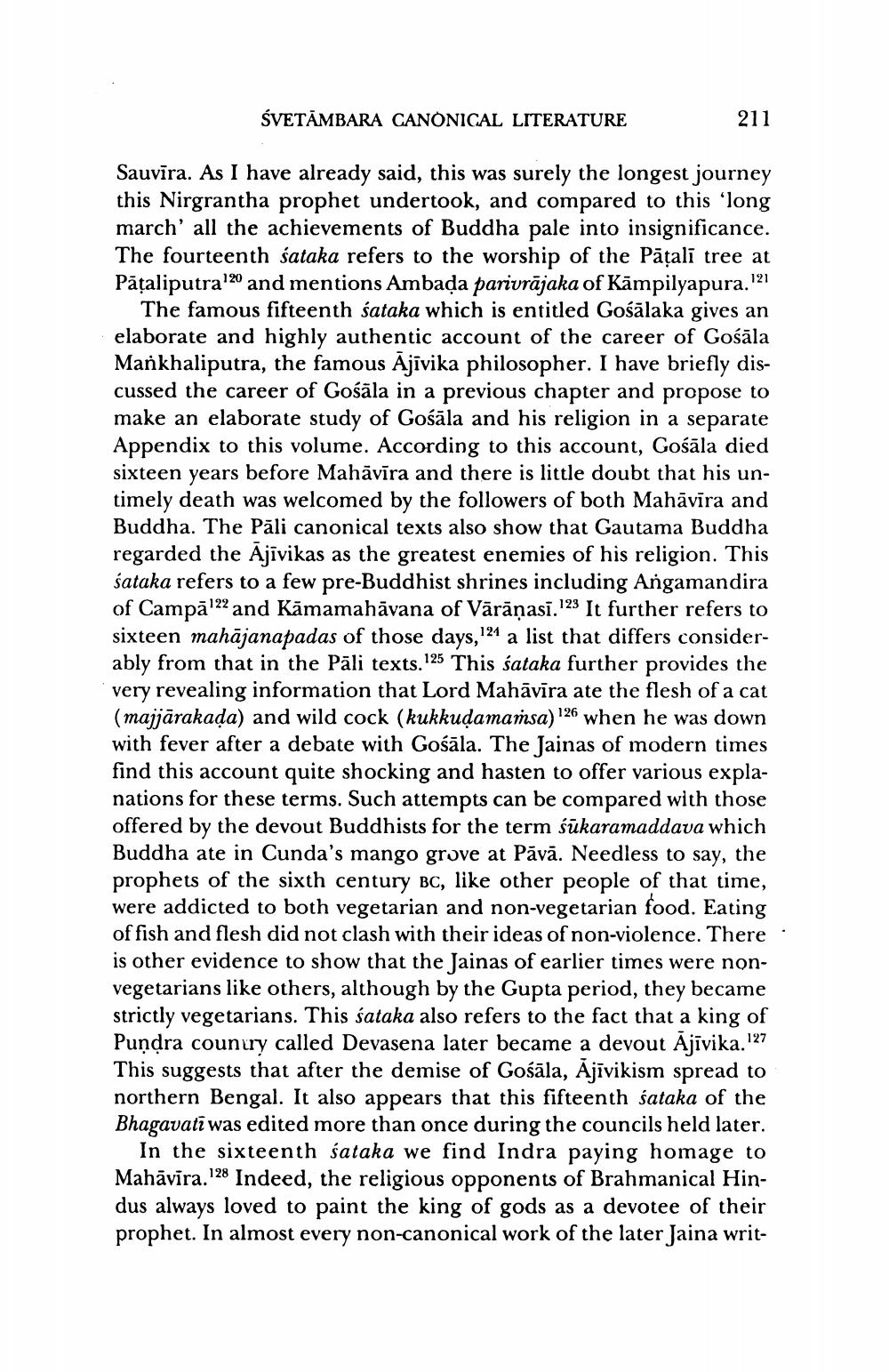________________
SVETAMBARA CANONICAL LITERATURE
211
Sauvira. As I have already said, this was surely the longest journey this Nirgrantha prophet undertook, and compared to this 'long march' all the achievements of Buddha pale into insignificance. The fourteenth sataka refers to the worship of the Pațali tree at Pataliputra120 and mentions Ambaḍa parivrājaka of Kampilyapura. 121
The famous fifteenth sataka which is entitled Gośālaka gives an elaborate and highly authentic account of the career of Gośāla Mankhaliputra, the famous Ājīvika philosopher. I have briefly discussed the career of Gośāla in a previous chapter and propose to make an elaborate study of Gośāla and his religion in a separate Appendix to this volume. According to this account, Gośāla died sixteen years before Mahāvīra and there is little doubt that his untimely death was welcomed by the followers of both Mahāvīra and Buddha. The Păli canonical texts also show that Gautama Buddha regarded the Ajivikas as the greatest enemies of his religion. This śataka refers to a few pre-Buddhist shrines including Angamandira of Campa122 and Kāmamahāvana of Vārāṇasī.123 It further refers to sixteen mahajanapadas of those days,124 a list that differs considerably from that in the Pāli texts.125 This sataka further provides the very revealing information that Lord Mahāvīra ate the flesh of a cat (majjārakaḍa) and wild cock (kukkuḍamaṁsa) 126 when he was down with fever after a debate with Gośāla. The Jainas of modern times find this account quite shocking and hasten to offer various explanations for these terms. Such attempts can be compared with those offered by the devout Buddhists for the term sūkaramaddava which Buddha ate in Cunda's mango grove at Pāvā. Needless to say, the prophets of the sixth century BC, like other people of that time, were addicted to both vegetarian and non-vegetarian food. Eating of fish and flesh did not clash with their ideas of non-violence. There is other evidence to show that the Jainas of earlier times were nonvegetarians like others, although by the Gupta period, they became strictly vegetarians. This sataka also refers to the fact that a king of Pundra country called Devasena later became a devout Ājīvika.127 This suggests that after the demise of Gośāla, Ājīvikism spread to northern Bengal. It also appears that this fifteenth sataka of the Bhagavati was edited more than once during the councils held later.
In the sixteenth sataka we find Indra paying homage to Mahāvīra.128 Indeed, the religious opponents of Brahmanical Hindus always loved to paint the king of gods as a devotee of their prophet. In almost every non-canonical work of the later Jaina writ




